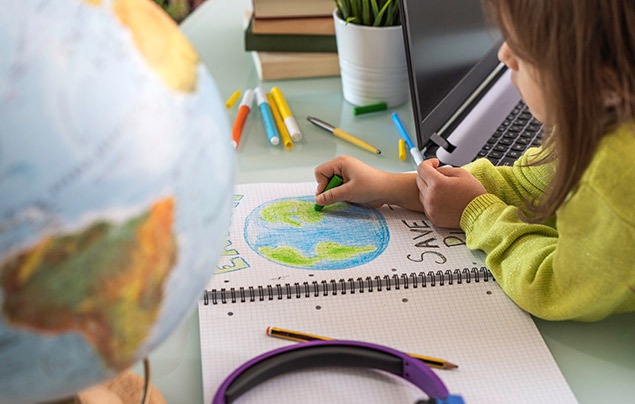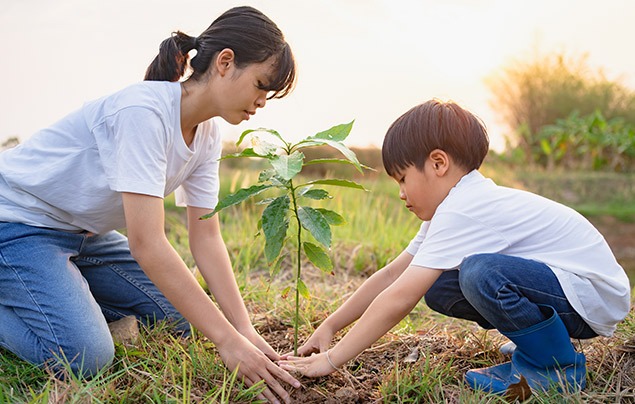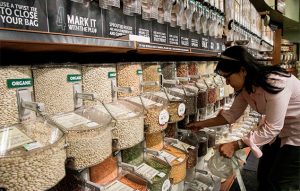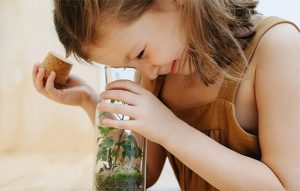Eco-anxiety: what is it and how can parents help?
Check out our top tips to help ease kids' fears...
Chronic worry about the effects of climate change, known as ‘eco-anxiety’, is a growing threat among young people. So, what can parents do to help? We find out…
What is eco-anxiety?
In recent years, more and more people – including kids – have experienced eco-anxiety. Described as extreme and persistent worry about current and future harm to the environment due to climate change, this condition can cause not only emotional distress, but also panic attacks, lack of focus, and feelings of hopelessness.
In many ways, mild eco-anxiety can seem a normal way to feel about the current situation, and these fears often stem from a deep love and care for the natural world. But a survey of child psychologists suggested that more than half were seeing children and young people who expressed distress, fear and worry about the state of the environment. So, it’s important to recognise these worries and help kids manage their feelings safely.
What can I do to help?
Give perspective
It’s easy to become overwhelmed when thinking about climate change. From increased extreme weather to the melting ice caps, increased droughts, and animal extinctions, the issues can quickly snowball. So it’s important to maintain some perspective.
If your child’s worry is that ‘everything will burn up’ or ‘all the animals will die’, you can explain that these things aren’t true – or aren’t coming true soon. (Use our climate change explainer to help.)
More likely, your local area will experience hotter summers or increased rainfall. These precise facts can help ground kids, preventing fears from becoming overwhelming.
Try to pivot away from scary thoughts and towards what positive actions are already happening. If your child is interested, you can help your local wildlife, adopt an animal from their favourite species or join a local environmental group to start making a difference.
Take action
No one is going to solve climate change alone – but small positive actions by individual people do matter. So, combat feelings of guilt or hopelessness by showing kids they can make a difference.
Here are some ideas to get you started…
- – Try cycling, walking, or taking public transport for short journeys.
- – Challenge them to take a super speedy shower of two minutes or less, to reduce water use.
- – Go hunting for charity shop treasures rather than buying new toys.
- – Take a rubbish bag on your next walk and pick up litter.
- – Make a game of turning off all the unused switches in the house.
- – Test out some new veggie or vegan recipes on ‘Meat-free Monday’, and let the kids help you choose what to make each week.
Keep them informed
Fear of the unknown can be a key driver of anxiety. So, educate your child on exactly what climate change is – and how they can help.
Firstly, explain where climate change comes from and describe how it’s affecting our planet (use this simple guide to help).
Then, highlight the ways different organisations, governments and people are trying to combat it. Make it clear that something can be done about climate change, and that lots of people around the world are working hard to create a greener planet for everyone.
In National Geographic Kids magazine, we showcase all kinds of people around the world who are working to protect our planet and all the people and animals that live there. For example, in 2022, we featured some amazing young changemakers who won awards for their sustainable innovations! Inspire your readers with hope and creativity that could help our planet, with a subscription to Nat Geo Kids’ monthly magazine.
Symptoms of eco-anxiety
Common symptoms include nervousness, sleep disturbances and feelings of guilt, which can damage mental health over time. But, like other forms of anxiety, eco-anxiety affects everyone differently. For many, eco-anxiety can spark a need to get involved and create change. But for others, it can become a long-term problem with detrimental effects.
Look out for signs that your child’s worry is starting to dominate other aspects of their life, or that they are withdrawing from things they used to enjoy or care about. This may indicate a larger issue that could require some professional advice.
We believe that encouraging conversation and taking small, manageable steps to save the Earth as a family will help boost their wellbeing – and it might help you feel better too.

















LEAVE A COMMENT
THANK YOU
Your comment will be checked and approved shortly.
WELL DONE,
YOUR COMMENT
HAS BEEN ADDED!
COMMENTS
CUSTOMIZE YOUR AVATAR